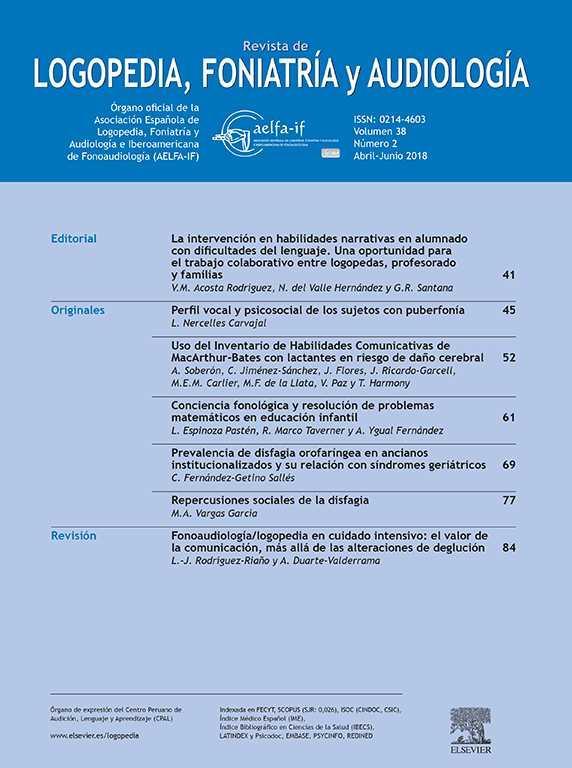Información de la revista
Compartir
Descargar PDF
Más opciones de artículo
Intervención neuropsicológica y del lenguaje en la enfermedad de Alzheimer. Descripción de un caso clínico
Neuropsychological and language intervention in Alzheimer´s disease: description of a clinical case
N.. Cullell, O.. Bruna, M.. Puyuelo







